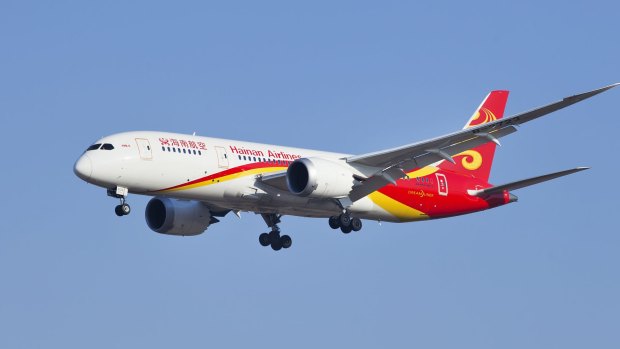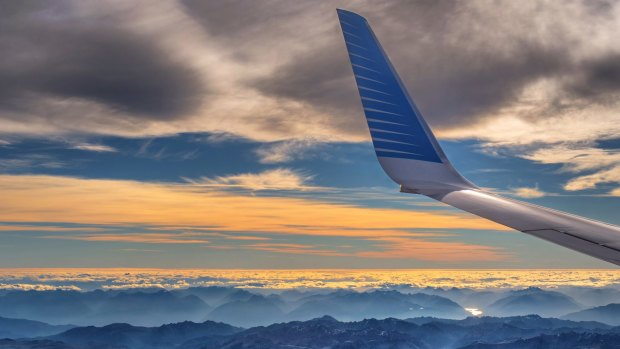By Michael Gebicki

The hole is the vent for the exhaust from the auxiliary power unit (APU), a small turbine that sits in the tail cone.Credit: Shutterstock
That's the vent for the exhaust from the auxiliary power unit (APU), a small turbine that sits in the tail cone.
The APU provides electrical power for the aircraft's electronics, airconditioning, cabin lighting and other electrical systems when the aircraft is on the ground.
A parked aircraft can also draw power from the electric grid or from a portable ground power unit (GPU) but when that's not available the APU is called into action.

Since it relies more heavily on electrical power rather than conventional pneumatic systems, Boeing's 787 Dreamliner has two generators per engine.Credit: Shutterstock
The APU is usually started after the aircraft lands and is on its way to the gate. The APU can also provide the power required to start the main engines.
When the aircraft's jet engines are operating the aircraft draws electrical power from generators mounted in each engine and the APU is normally deactivated, although it might not be as a precautionary measure in the case of long overwater flights.
Since it relies more heavily on electrical power rather than conventional pneumatic systems, Boeing's 787 Dreamliner has two generators per engine, and so does its APU.
Why do aircraft have winglets?

Credit: SHUTTERSTOCK
Winglets are those small, upturned tips at the end of an aircraft's wings and they've become an increasingly common sight on passenger aircraft this century.
A wing generates lift by creating an area of pressure that is greater below the wing than above it. At the tip of a conventional flat wing, a vortex is created as some of the higher pressure air circulates to the top of the wing, creating drag and reducing the efficiency of the wing.
A winglet is a deflection device that reduces the passage of air from below the wing to the "low pressure" top surface, offsetting the drag effect.
Winglets increase an aircraft's range and also reduce fuel consumption by as much as 5 per cent, and fuel costs are now one of the biggest components of an airline's balance sheet. Most commercial jet aircraft are manufactured with winglets but they are also available as a retrofit for older aircraft. Even after an aircraft is scrapped its winglets have value.
The winglets from a Boeing 737NG can fetch $US650,000 on the second-hand market.
How much fuel does a plane burn while taxiing?
In a 15-minute taxi between gate and runway, a Boeing 747 can burn about a tonne of fuel.
At current prices that fuel costs around $680. While aircraft jet engines are very efficient in propelling an aircraft when airborne, performance suffers when pushing that mass around on the ground.
So why not use a tow vehicle similar to the ones that are used to push aircraft away from the gate?
One reason is that these vehicles lack sufficient power to move a fully loaded A380 or 747 at reasonable speed, another is that jet engines need to warm up before takeoff, and finally pilots greatly prefer to be in charge of their aircraft's movements.
One solution is TaxiBot, a powerful, semi-robotic, pilot-controlled vehicle which transports aircraft from terminal gates to the runway and back, with the aircraft's engines set to idle. TaxiBot has been in operation towing Lufthansa's Boeing 737 aircraft at Frankfurt Airport since 2014, saving around 11,000 tonnes of fuel a year.
Certification was recently extended to include all Airbus 318, 319, 320 and 321 aircraft, including the NEO variants.
See also: Why do planes bump and lurch when passing through clouds?
See also: What plane are you flying on? Here's how to find out
Sign up for the Traveller newsletter
The latest travel news, tips and inspiration delivered to your inbox. Sign up now.